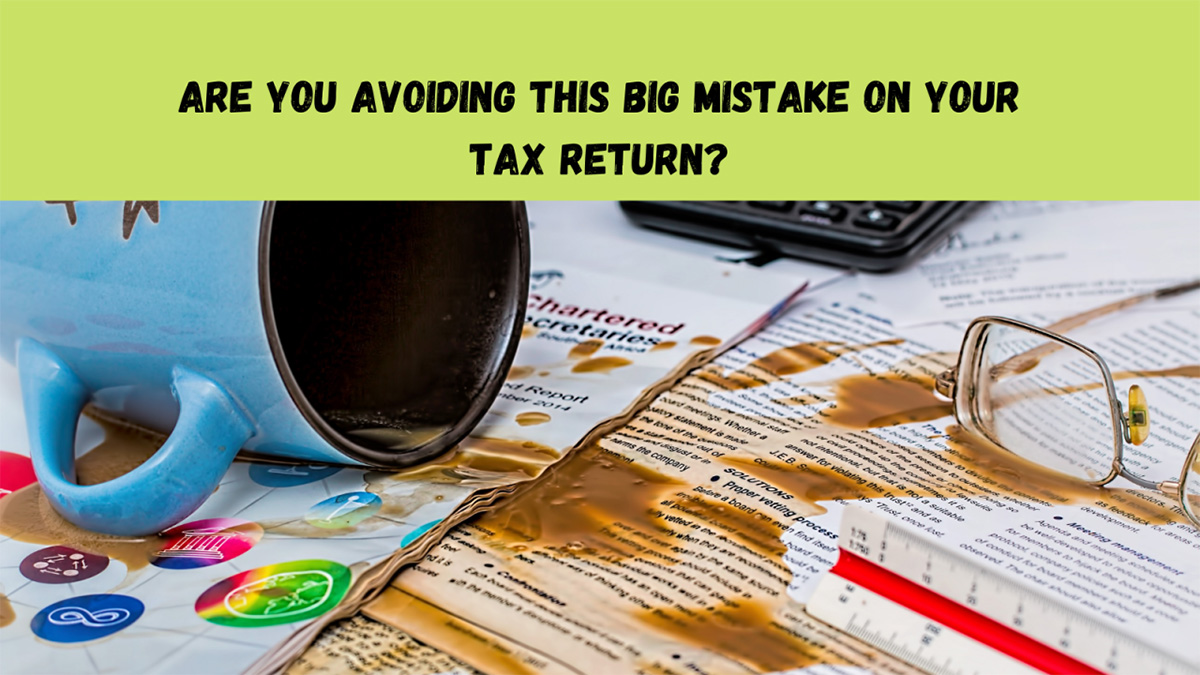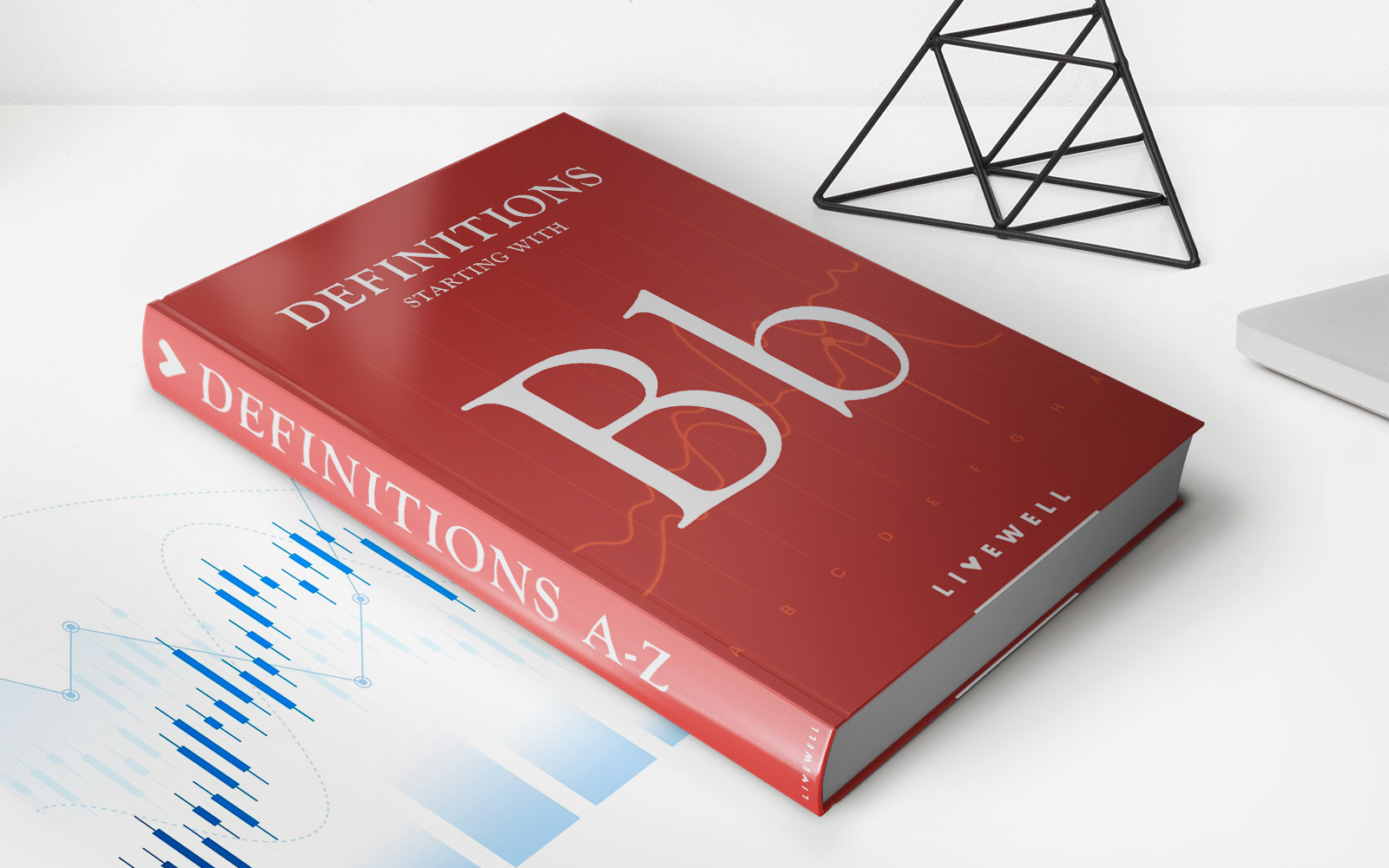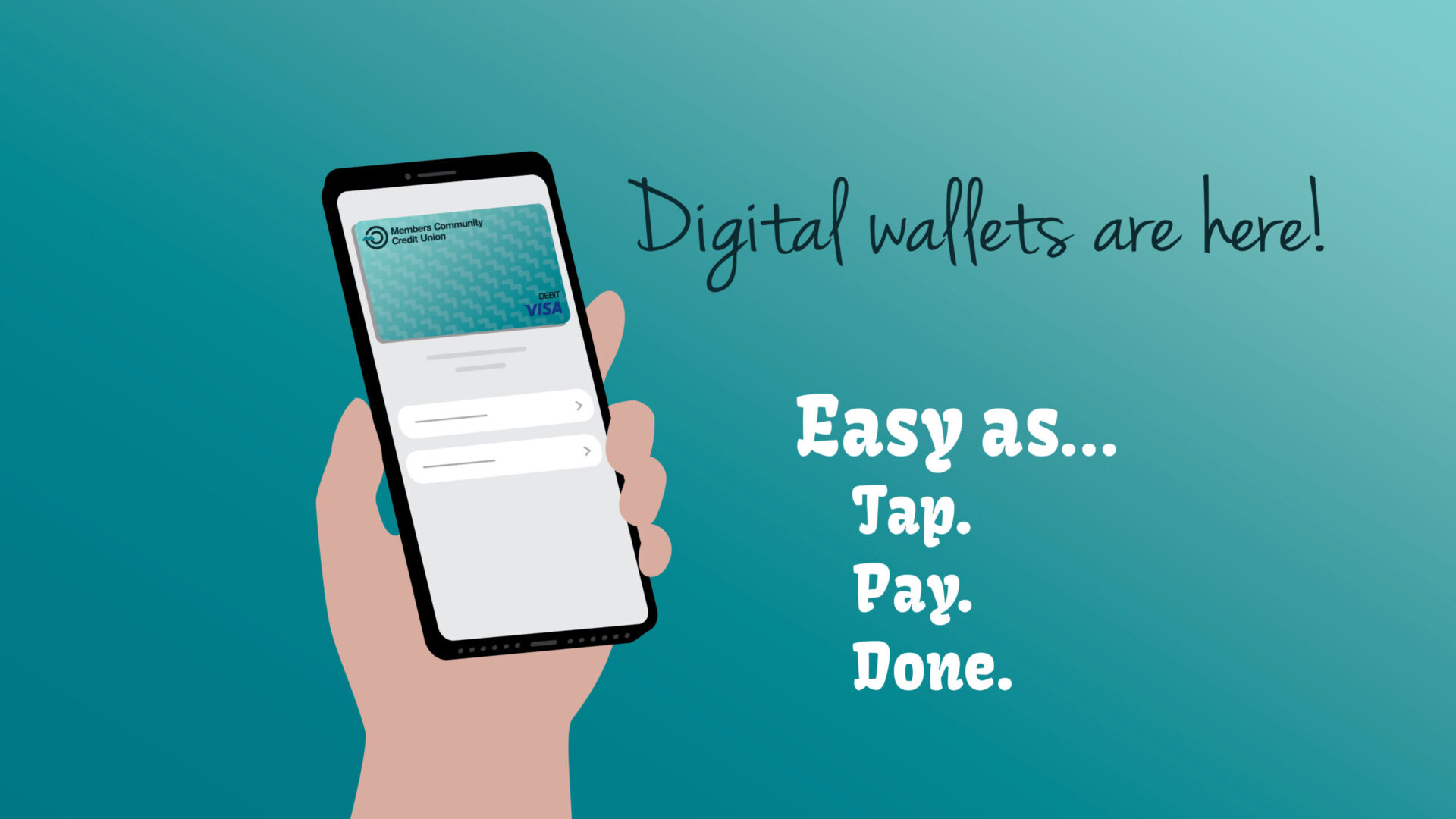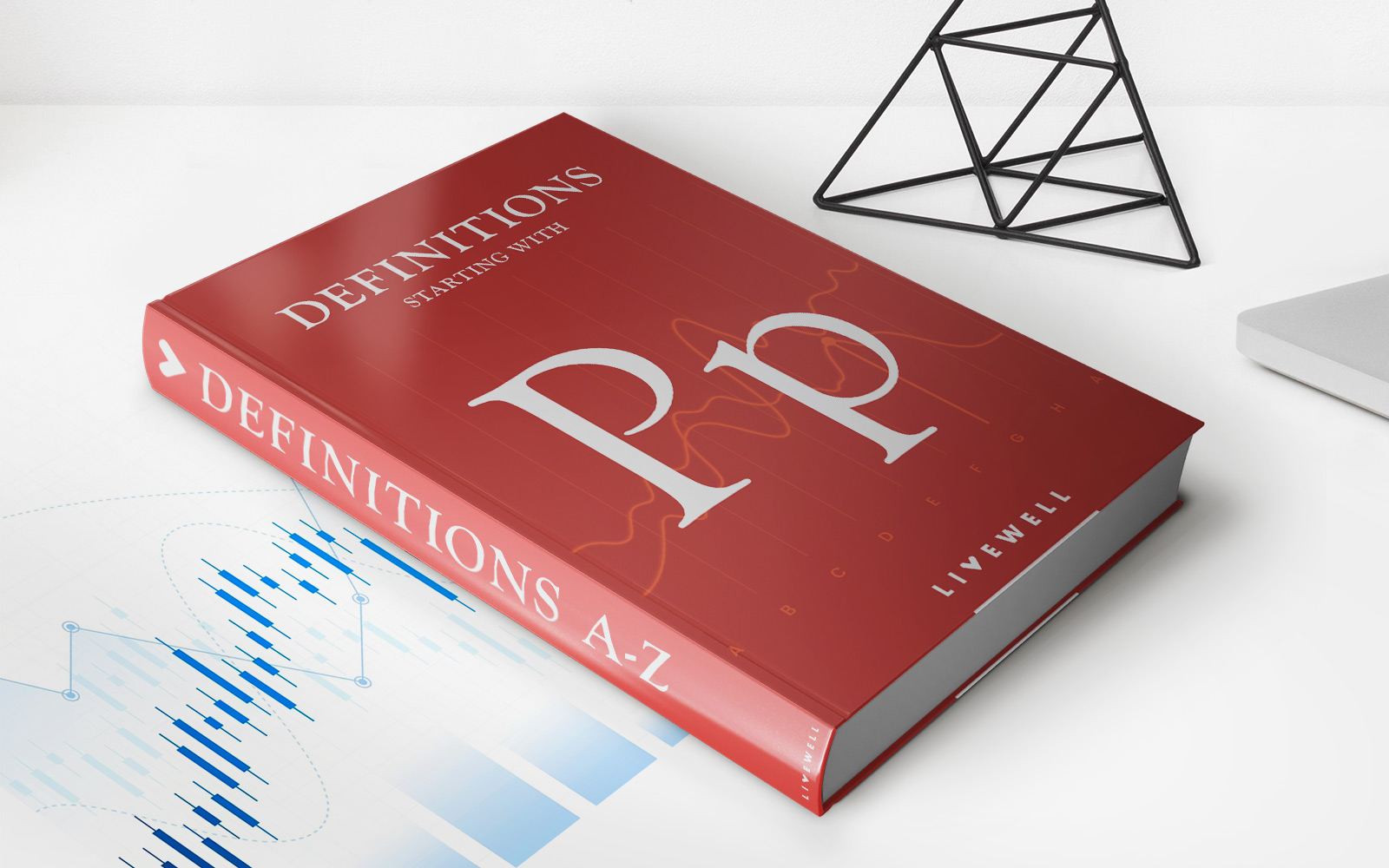Home>Finance>How To Report Business Bad Debt On A Tax Return


Finance
How To Report Business Bad Debt On A Tax Return
Published: October 29, 2023
Learn how to report business bad debt on your tax return and maximize your tax savings. Expert guidance for handling finance-related issues.
(Many of the links in this article redirect to a specific reviewed product. Your purchase of these products through affiliate links helps to generate commission for LiveWell, at no extra cost. Learn more)
Table of Contents
- Introduction
- Definition of Business Bad Debt
- Identifying and Documenting Business Bad Debt
- Deducting Business Bad Debt on a Tax Return
- Reporting Business Bad Debt on Schedule C
- Reporting Business Bad Debt on Form 1120
- Reporting Business Bad Debt on Form 1065
- Reporting Business Bad Debt on Form 1040
- Reporting Partially Worthless Debts
- Limited Deductions for Related Party Bad Debts
- Recordkeeping Requirements for Reporting Bad Debt
- Conclusion
Introduction
Welcome to our comprehensive guide on how to report business bad debt on a tax return. As a business owner, it’s crucial to have a clear understanding of how to handle bad debts to ensure accurate reporting and maximize your tax deductions.
Firstly, let’s define what exactly constitutes business bad debt. In simple terms, it refers to money owed to your business that you are unable to collect. Whether it’s a customer who defaults on a payment or a business partner who fails to repay a loan, bad debts can have a significant impact on your bottom line.
Identifying and documenting bad debt is an essential step in the reporting process. This involves keeping meticulous records and supporting documentation that prove the debt’s existence and the efforts made to collect it.
Next, we’ll explore how to deduct business bad debt on your tax return. The method of reporting will vary depending on your business structure. Sole proprietors will report on Schedule C, while corporations will use Form 1120 or Form 1065 for partnerships. Individuals with business bad debt may utilize Form 1040 to claim deductions. It’s important to familiarize yourself with the specific forms applicable to your business.
If you have partially worthless debts, where a portion is collectible, there are guidelines to follow to report these accurately. Additionally, there are limited deductions for related party bad debts, which require special attention to ensure compliance with tax regulations.
Recordkeeping is a crucial aspect of reporting bad debt. Maintaining thorough documentation, including invoices, contracts, promissory notes, and communication records, is essential to support your claims and withstand any potential audits.
In this guide, we will walk you through step by step on how to report business bad debt accurately on your tax return. By following these guidelines and staying organized, you can ensure that you don’t miss out on any potential deductions and maintain compliance with the IRS regulations.
Now, let’s dive into the details of identifying and documenting business bad debt, as well as the specific reporting requirements for each form, to help you effectively report bad debt on your tax return.
Definition of Business Bad Debt
Before we delve into the intricacies of reporting business bad debt on a tax return, let’s begin by understanding what exactly constitutes business bad debt.
In the simplest terms, business bad debt refers to money that is owed to your business that you are unable to collect. It can arise from various scenarios, such as when a customer fails to pay for goods or services, a loan made to a business partner becomes uncollectible, or a vendor defaults on their payment obligations.
It’s important to note that there are certain requirements for a debt to be classified as business bad debt. Firstly, the debt must be bona fide, meaning it must be a legitimate obligation owed to your business. It cannot, for example, be a personal debt or a payment owed to you as an individual unrelated to your business activities.
Secondly, there must be an intention to collect the debt initially. If you mistakenly classify a debt as business bad debt when it was never intended to be collected, it may not qualify for a tax deduction.
Finally, you must establish that the debt has become worthless or partially worthless. This means that you have made reasonable efforts to collect the debt, but despite your best efforts, you are unable to recover the full or partial amount owed.
It is crucial to keep accurate records and documentation demonstrating the existence of the debt and efforts made to collect it. This includes invoices, contracts, promissory notes, and any communication records with the debtor.
Overall, business bad debt refers to debts that cannot be collected and meet the necessary criteria to be classified as such. Understanding this definition is the foundation for properly reporting bad debt on your tax return and maximizing potential deductions. Next, we will explore how to identify and document business bad debt in more detail.
Identifying and Documenting Business Bad Debt
Accurately identifying and documenting business bad debt is a crucial step in the process of reporting it on your tax return. By maintaining thorough records and documentation, you can substantiate the existence of the debt and the efforts made to collect it. Here are some key steps to follow:
1. Keep Detailed Records: From the outset of the business relationship, it’s important to maintain clear and organized records related to any debts owed to your business. This includes invoices, contracts, promissory notes, and any communication records with the debtor.
2. Identify Problematic Debts: Regularly review your accounts receivable to identify any problematic debts. Look for customers or business partners who consistently make late payments or fail to settle their obligations. This proactive approach will help you address potential bad debts early on.
3. Document Collection Efforts: Once you identify a debt as potentially bad, document all collection efforts. Keep a log of phone calls, emails, or letters sent to the debtor requesting payment. These efforts will demonstrate your intention to collect the debt and support your claim for bad debt deduction.
4. Assess Worthlessness or Partial Worthlessness: Determine whether the debt has become entirely worthless or partially worthless. An entirely worthless debt is one where there is no reasonable expectation of ever receiving payment. A partially worthless debt is one where you can establish that a portion of the debt is uncollectible. Properly assess and document the value of the debt that has become worthless or partially worthless.
5. Consider Legal Action: If your collection efforts have been unsuccessful, you may need to consider legal action. Engage the services of an attorney specializing in debt collection to evaluate the feasibility of pursuing legal remedies and document your attempts to recover the debt.
6. Consult a Tax Professional: The process of identifying and documenting business bad debt can be complex. It’s wise to consult with a tax professional, such as an accountant or tax advisor, who can provide expert guidance tailored to your specific situation.
By following these steps, you can ensure that you have the necessary documentation and evidence to support your claim for business bad debt. Next, we will explore how to deduct business bad debt on your tax return, including the reporting requirements for different business structures.
Deducting Business Bad Debt on a Tax Return
When it comes to reporting business bad debt on your tax return, it’s important to understand the specific guidelines and requirements to ensure accurate reporting and maximize your deductions. The method of reporting will depend on your business structure, so let’s explore the various options:
- Schedule C (Sole Proprietors): If you operate your business as a sole proprietorship, you will report your business bad debt on Schedule C, which is filed as part of your personal tax return (Form 1040). On Schedule C, you will report the bad debt under the “Other Expenses” section, specifically on line 8, labeled “Bad Debts.”
- Form 1120 (Corporations): Corporations report business bad debt on Form 1120, the U.S. Corporation Income Tax Return. The bad debt deduction is claimed on Schedule M-1, which reconciles the corporation’s net income for tax purposes with its financial statement income.
- Form 1065 (Partnerships): If your business is structured as a partnership, the bad debt deduction is reported on Form 1065, the U.S. Return of Partnership Income. The deduction is allocated among the partners based on their ownership interests in the partnership.
- Form 1040 (Individuals): If you have business bad debt as an individual, you can report it on your personal tax return using Form 1040. The bad debt deduction is claimed as a miscellaneous itemized deduction on Schedule A, subject to certain limitations imposed by the IRS.
It’s important to note that the specific instructions and requirements for reporting bad debt may vary based on the forms and schedules used for each business structure. Familiarize yourself with the instructions provided by the IRS to ensure accurate reporting and compliance.
When reporting business bad debt, you will need to provide supporting documentation to substantiate your claim. This includes records of the debt, collection efforts, and any legal actions taken. Additionally, make sure to maintain accurate records and documentation of the deduction claimed on your tax return for future reference or in case of an audit.
It’s highly recommended to consult with a tax professional, such as an accountant or tax advisor, who can provide tailored guidance based on your specific situation. They can ensure that you navigate the reporting process correctly and make the most of your deductions.
Next, we will dive into the specific reporting requirements for different forms, such as Schedule C, Form 1120, Form 1065, and Form 1040, to help you navigate the reporting process with confidence.
Reporting Business Bad Debt on Schedule C
If you operate your business as a sole proprietorship, reporting business bad debt is done on Schedule C, which is filed as part of your personal tax return (Form 1040). Here’s how you can report business bad debt on Schedule C:
- Line 8 – Bad Debts: On Schedule C, you will report the bad debt deduction on line 8, labeled “Bad Debts.” This is located in the “Other Expenses” section of the form.
- Recordkeeping: Maintain accurate records of the bad debts, including the names of the debtors, the amounts owed, and the efforts made to collect the debts. This documentation is essential to support your claim for the bad debt deduction.
- Determining Worthlessness: Determine if the bad debt is entirely worthless or partially worthless. An entirely worthless debt is one where there is no reasonable expectation of ever receiving payment. A partially worthless debt is one where you can establish that a portion of the debt is uncollectible. You will need to assess and document the value of the debt that has become worthless or partially worthless.
- Supporting Documentation: Along with Schedule C, you should attach a statement that provides a detailed explanation of each bad debt being claimed. Include information such as the debtor’s name, the amount owed, the date the debt became due, and the reasons for deeming it uncollectible. Support this statement with any relevant documentation, such as invoices, contracts, promissory notes, or communication records.
- Consistency: Be consistent in how you report bad debts on your tax returns. Use the same method consistently to report bad debts for all tax years. This will help you maintain compliance with IRS regulations and provide a clear record of your bad debt deductions.
It’s crucial to keep in mind that you must have a legitimate business purpose for the debt and have made efforts to collect it before claiming it as a bad debt deduction. Additionally, ensure that you meet all other general requirements for operating a business as a sole proprietorship and filing Schedule C.
While the process of reporting bad debt on Schedule C may appear straightforward, it is still recommended to consult with a tax professional to ensure accurate reporting and maximize your deductions. They can provide valuable insights and guidance specific to your business situation.
Next, we will explore the reporting requirements for bad debt deductions on Form 1120 (for corporations) and Form 1065 (for partnerships).
Reporting Business Bad Debt on Form 1120
If your business is structured as a corporation, reporting business bad debt is done on Form 1120, the U.S. Corporation Income Tax Return. Here’s how you can report business bad debt on Form 1120:
- Schedule M-1 – Reconciliation: On Form 1120, the bad debt deduction is claimed on Schedule M-1, which reconciles the corporation’s net income for tax purposes with its financial statement income. The bad debt deduction reduces the taxable income of the corporation.
- Identification and Documentation: Maintain detailed records of the bad debts, including the names of the debtors, the amounts owed, and the efforts made to collect the debts. This documentation is crucial to support your claim for the bad debt deduction.
- Determining Worthlessness: Determine whether the bad debt is entirely worthless or partially worthless. An entirely worthless debt is one where there is no reasonable expectation of ever receiving payment. A partially worthless debt is one where a portion of the debt is deemed uncollectible. Evaluate and document the value of the debt that has become worthless or partially worthless.
- Supporting Documentation: Along with Form 1120, attach a statement that provides a detailed explanation of each bad debt being claimed. Include information such as the debtor’s name, the amount owed, the date the debt became due, and the reasons for considering it uncollectible. Support this statement with any relevant documentation, such as invoices, contracts, promissory notes, or communication records.
- Consistency: Consistency is key when reporting bad debts on Form 1120. Use the same method of reporting bad debts consistently across all tax years. This ensures compliance with IRS regulations and provides a clear record of your bad debt deductions.
Remember that you must have a valid business purpose for the debt, and you must have made reasonable efforts to collect it before claiming it as a bad debt deduction. Additionally, ensure that you meet all other general requirements for filing Form 1120 as a corporation.
While reporting bad debt on Form 1120 may seem straightforward, consulting with a tax professional is advisable. They can offer expert advice tailored to your specific circumstances, ensuring accurate reporting and maximizing your deductions.
Next, we will explore the reporting requirements for bad debt deductions on Form 1065 (for partnerships).
Reporting Business Bad Debt on Form 1065
If your business is structured as a partnership, reporting business bad debt is done on Form 1065, the U.S. Return of Partnership Income. Here’s how you can report business bad debt on Form 1065:
- Allocation Among Partners: The bad debt deduction on Form 1065 is allocated among the partners based on their ownership interests in the partnership. Each partner’s share of the bad debt deduction is reported on their respective Schedule K-1.
- Identification and Documentation: Maintain detailed records of the bad debts, including the names of the debtors, the amounts owed, and the efforts made to collect the debts. This documentation is crucial to support your claim for the bad debt deduction.
- Determining Worthlessness: Determine whether the bad debt is entirely worthless or partially worthless. An entirely worthless debt is one where there is no reasonable expectation of ever receiving payment. A partially worthless debt is one where you can establish that a portion of the debt is uncollectible. Evaluate and document the value of the debt that has become worthless or partially worthless.
- Supporting Documentation: Each partner’s share of the bad debt deduction should be reported on their Schedule K-1. Along with Form 1065, the partnership should attach a statement that provides a detailed explanation of each bad debt being claimed. Include information such as the debtor’s name, the amount owed, the date the debt became due, and the reasons for considering it uncollectible. Support this statement with any relevant documentation, such as invoices, contracts, promissory notes, or communication records.
- Consistency: Consistency is important when reporting bad debts on Form 1065. Use the same method consistently for reporting bad debts across all tax years. This ensures compliance with IRS regulations and provides a clear record of your bad debt deductions.
It’s crucial to have a valid business purpose for the debt, and to have made reasonable efforts to collect it before claiming it as a bad debt deduction. Remember to meet all other general requirements for filing Form 1065 as a partnership.
While reporting bad debt on Form 1065 may seem straightforward, it’s a good idea to consult with a tax professional. They can provide expert advice tailored to your specific partnership structure and ensure accurate reporting and maximum deductions.
Next, we will discuss the reporting requirements for bad debt deductions on Form 1040 (for individuals).
Reporting Business Bad Debt on Form 1040
If you have business bad debt as an individual, you can report it on your personal tax return using Form 1040. Here’s how you can report business bad debt on Form 1040:
- Schedule A – Itemized Deductions: Business bad debt deductions for individuals are claimed as miscellaneous itemized deductions on Schedule A, which is attached to your Form 1040. On Schedule A, report the total amount of your business bad debt under the “Other Miscellaneous Deductions” section.
- Identification and Documentation: Maintain detailed records of the bad debts, including the names of the debtors, the amounts owed, and the efforts made to collect the debts. This documentation is crucial to support your claim for the bad debt deduction.
- Determining Worthlessness: Determine whether the bad debt is entirely worthless or partially worthless. An entirely worthless debt is one where there is no reasonable expectation of ever receiving payment. A partially worthless debt is one where you can establish that a portion of the debt is uncollectible. Evaluate and document the value of the debt that has become worthless or partially worthless.
- Supporting Documentation: Along with Form 1040, attach a statement that provides a detailed explanation of each bad debt being claimed. Include information such as the debtor’s name, the amount owed, the date the debt became due, and the reasons for considering it uncollectible. Support this statement with any relevant documentation, such as invoices, contracts, promissory notes, or communication records.
- Limits and Deduction Phaseout: Keep in mind that miscellaneous itemized deductions, including business bad debt deductions, are subject to certain limitations and phaseouts. Consult the instructions for Schedule A and the IRS guidelines for the specific thresholds and limitations for the tax year you are filing.
It’s important to have a valid business purpose for the debt and to demonstrate reasonable efforts to collect it before claiming it as a bad debt deduction. Additionally, ensure that you meet all other general requirements for filing Form 1040 as an individual.
While reporting bad debt on Form 1040 may seem straightforward, it is always advisable to consult with a tax professional. They can offer expert guidance tailored to your specific circumstance, ensuring accurate reporting and maximizing your deductions.
Now that we have covered the reporting requirements for business bad debt on different tax forms, we will explore reporting partially worthless debts and limited deductions for related party bad debts in the following sections.
Reporting Partially Worthless Debts
In some cases, a debt may not be entirely worthless but partially uncollectible. When reporting partially worthless debts, it’s important to follow specific guidelines to accurately claim deductions. Here’s what you need to know:
1. Determining Partial Worthlessness: Assess the debt to determine the portion that is uncollectible. This requires an evaluation of the debtor’s financial situation, collection efforts made, and any other relevant factors. Keep thorough documentation supporting your determination of partial worthlessness.
2. Allocating the Deduction: Allocate the bad debt deduction between the portion that is uncollectible and the portion that remains collectible. You can only claim a deduction for the portion that is deemed partially worthless, not the full amount of the debt.
3. Reporting on Tax Forms: The specific tax form used for reporting partially worthless debts will depend on your business structure. Generally, you will report the deduction on Schedule C (for sole proprietors), Form 1120 (for corporations), Form 1065 (for partnerships), or Schedule A (for individuals), depending on your business type.
4. Supporting Documentation: Maintain meticulous records to support your claim for the partially worthless debt deduction. This includes documentation of the debtor’s financial situation, collection efforts, and any other relevant evidence that demonstrates the partial worthlessness of the debt.
5. Consult a Tax Professional: Reporting partially worthless debts can be complex, and it’s recommended to seek professional guidance. A tax professional, such as an accountant or tax advisor, can assist you in properly documenting and reporting partially worthless debts to ensure compliance with IRS regulations.
It’s crucial to remember that the IRS requires a reasonable basis for claiming deductions for partially worthless debts. Deductions must be supported by credible evidence and be consistent with the provisions outlined in the tax code.
Consulting with a tax professional is highly beneficial when dealing with partially worthless debts. They can provide expert guidance specific to your business circumstances, ensuring accurate reporting and maximizing your deductions while staying in line with IRS regulations.
Next, we will discuss the limitations and considerations when reporting bad debts involving related parties.
Limited Deductions for Related Party Bad Debts
When it comes to bad debts involving related parties, the IRS imposes limitations on the deductibility of these debts. This is to prevent abuse of the tax system through artificial transactions or attempts to transfer losses. Here’s what you need to know:
1. Definition of Related Parties: Related parties include individuals and entities with a close relationship, such as family members, certain business partners, and corporations and partnerships with common ownership or control.
2. General Rule: Generally, you cannot claim a bad debt deduction for debts owed to you by a related party. This is based on the assumption that related parties may have arrangements or agreements that could alter the true nature and collectibility of the debt.
3. Exceptions: There are a few exceptions to the general rule, allowing for limited deductions for related party bad debts. These include situations where:
- The debt qualifies as a bona fide loan and is treated as such for tax purposes.
- The debt becomes completely worthless during the tax year.
- The bad debt arises from a guarantee or endorsement provided by the taxpayer.
4. Documentation and Substantiation: It is crucial to provide proper documentation and substantiation for related party bad debts. This includes maintaining records such as loan agreements, promissory notes, communication history, and any evidence supporting the relationship and the legitimacy of the debt.
5. IRS Scrutiny: Due to the potential for abuse or manipulation, related party bad debts often face increased scrutiny from the IRS. It’s important to ensure that all transactions and supporting documentation comply with the requirements and can withstand possible audits or inquiries.
6. Professional Guidance: Given the complexity and potential pitfalls involved in deducting related party bad debts, it is highly advisable to seek professional guidance. A tax professional with expertise in this area can provide tailored advice and assist you in navigating the reporting requirements in compliance with IRS regulations.
When dealing with related party bad debts, it’s crucial to consult a tax professional to ensure you are following the appropriate rules and guidelines. They can help you properly document and report related party bad debts, maximizing your deductions while mitigating the risk of IRS scrutiny.
Now that we have discussed reporting bad debts involving related parties, we will explore the recordkeeping requirements for reporting bad debts in the next section.
Recordkeeping Requirements for Reporting Bad Debt
When it comes to reporting bad debt on your tax return, keeping accurate and thorough records is essential. Proper recordkeeping ensures that you have the necessary documentation to substantiate your claim for a bad debt deduction and can provide evidence in case of an IRS audit. Here are the key recordkeeping requirements to consider:
1. Documentation of the Debt: Maintain records that clearly establish the existence of the debt. This includes invoices, contracts, promissory notes, or any other written agreements that outline the details of the debt.
2. Documentation of Collection Efforts: Keep a record of the collection efforts you’ve made to recover the debt. This includes correspondence, emails, letters, or phone call logs that demonstrate your attempts to collect payment from the debtor.
3. Evidence of Worthlessness: Document the reasons and supporting evidence that establish the debt as either entirely or partially worthless. This may include financial statements of the debtor, bankruptcy filings, or any other evidence demonstrating the debtor’s inability to pay.
4. Supporting Documentation: Gather any additional supporting documentation to strengthen your claim. This may include bank records, proof of delivery of goods or services, and communication records that support the legitimacy and collectibility of the debt.
5. Consistency in Reporting: Maintain consistent records and reporting practices for bad debts across different tax years. This helps to establish a clear pattern of reporting and ensures compliance with IRS regulations.
6. Retention Period: Retain your records for a sufficient period of time. The general recommendation is to keep them for at least three years from the filing date of the tax return that claimed the bad debt deduction. However, it’s advisable to consult with a tax professional to determine the specific retention period suitable for your situation.
7. Digital Records: It’s acceptable to keep records in digital format as long as they can be easily accessed and reproduced if needed. Consider using electronic document management systems or cloud storage solutions to securely store your records.
By adhering to these recordkeeping requirements, you can ensure that you have the necessary documentation to support your bad debt deductions and establish the legitimacy of the claims made on your tax return.
It’s always a good idea to consult with a tax professional to ensure compliance with IRS regulations and to receive personalized guidance on how to effectively maintain and organize your records for reporting bad debts.
Now, let’s conclude our comprehensive guide on reporting bad debt on a tax return.
Conclusion
Navigating the process of reporting business bad debts on your tax return can seem daunting, but with the right understanding and preparation, you can accurately report and maximize your deductions. Here are the key points to remember:
– Business bad debt refers to money owed to your business that you are unable to collect. It must meet specific criteria to be classified as such.
– Identifying and documenting bad debt is crucial. Keep detailed records and supporting documentation that prove the existence of the debt and your collection efforts.
– The method of reporting bad debt will depend on your business structure. Sole proprietors report on Schedule C, corporations on Form 1120, partnerships on Form 1065, and individuals on Form 1040.
– Reporting partially worthless debts requires assessing and documenting the portion of the debt that is uncollectible.
– Deductions for related party bad debts are limited and require proper documentation and substantiation.
– Thorough recordkeeping is essential. Maintain records of the debt, collection efforts, and supporting documentation to substantiate your claim.
Throughout the reporting process, it’s advisable to consult with a tax professional who can provide expert guidance tailored to your specific situation. They can assist in navigating the complexities of reporting bad debts, ensuring accuracy and compliance with IRS regulations.
Remember the importance of consistency, documentation, and retention of records. By following the appropriate guidelines and maintaining organized records, you can confidently report business bad debts and claim the deductions you are entitled to.
Now that you are equipped with this comprehensive guide, you can confidently tackle the reporting of business bad debts on your tax return. By staying informed and seeking professional advice when needed, you can optimize your tax deductions and maintain compliance with IRS regulations.
Disclaimer: This article does not constitute legal or financial advice; it is provided for informational purposes only. For specific guidance on your tax situation, consult with a qualified tax professional.














